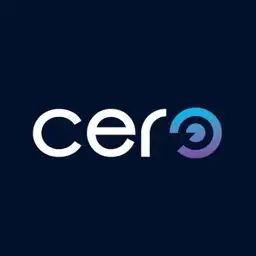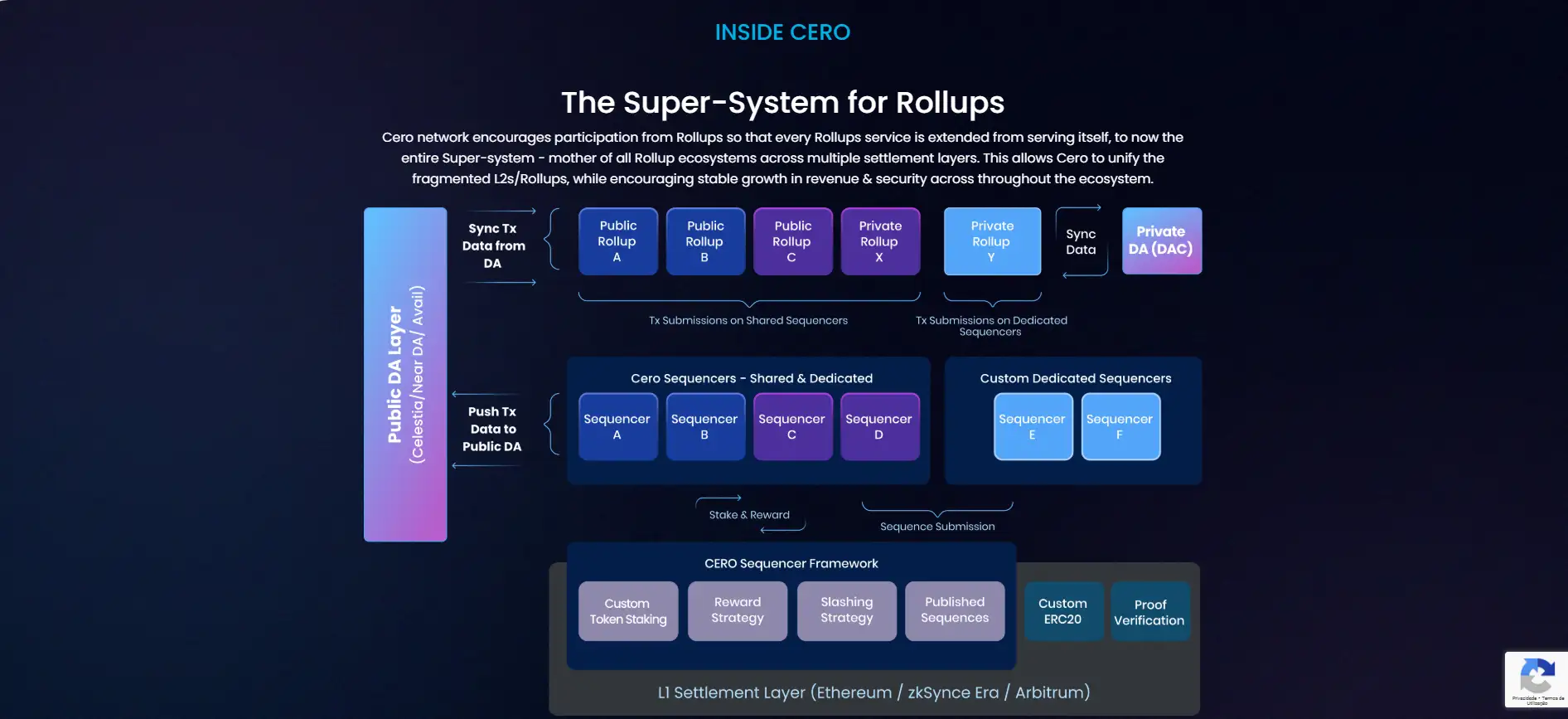About Cero Network
Cero Network is the first decentralized sequencing network purpose-built to support and unify the growing rollup ecosystem. By empowering rollups with secure, economically viable, and modular sequencing services, Cero Network creates a shared infrastructure layer for fair transaction ordering and multi-chain interoperability.
Unlike centralized sequencers that introduce censorship risk, MEV exploitation, and single points of failure, Cero Network decentralizes the transaction sequencing layer and offers rollups new revenue opportunities, predictability in cost, and full flexibility across settlement and data availability layers. It’s a foundational protocol enabling the next evolution of truly modular blockchain systems.
Cero Network was built to resolve some of the most critical limitations in the rollup architecture—centralized sequencing, unreliable transaction ordering, and siloed growth models. Its decentralized sequencing protocol offers a universal layer for transaction ordering, enabling multiple rollups to share a common sequencing service. In doing so, Cero Network unlocks economic scalability, system resilience, and cross-rollup interoperability across fragmented Layer 2 ecosystems.
The architecture behind Cero is both modular and configurable. Rollups can customize how they interact with the network—choosing their preferred settlement layers, data availability (DA) providers, and batching strategies. Cero integrates with existing rollup stacks by introducing a new sequencing flow: RPC nodes redirect transactions directly to Cero’s decentralized mempool, executors process only verified sequences, and rollup smart contracts are customized to consume Cero’s ordered batches. This creates a tamper-proof execution flow and introduces stronger guarantees of fairness and liveness.
A key differentiator of Cero is its focus on economic empowerment for rollups. Rather than earning revenue solely from their own transaction fees, rollups participating in Cero’s ecosystem earn sequencing rewards across the entire super-system. This includes multi-token yield distribution—lowering volatility and dependency on a single token—and a subscription-based pricing model that offers predictable cost structures.
On the security front, MEV mitigation is built into the core protocol. Cero provides protections against front-running, sandwich attacks, and other manipulative behaviors through mempool privacy and encryption. It also addresses centralization risk by ensuring censorship resistance and eliminating single points of failure—making it an ideal choice for enterprise, privacy-oriented, and L3 rollups alike.
Among the existing landscape of sequencing solutions, Cero distinguishes itself from projects like Astria, and Fairblock by offering true modularity, configurability, and support for both public and private rollups. Its focus on interoperability, shared economic incentives, and performance optimization positions it as a long-term solution for the rollup-centric future.
Cero Network offers a rich suite of benefits and features that help rollups overcome architectural, economic, and security challenges:
- Decentralized Sequencing: Eliminates central points of control and failure by replacing centralized sequencers with a secure, consensus-driven network.
- Economic Alignment: Rollups earn from system-wide sequencing rewards, reducing dependence on their own volume for sustainability.
- Multi-Token Yield: Revenue is distributed across multiple tokens, improving stability and diversification.
- Predictable Pricing: Subscription-based pricing gives rollups cost certainty while still participating in revenue sharing.
- MEV Protection: Built-in protections against exploitative MEV behaviors, including encrypted mempools and fair ordering.
- Modular Integration: Flexible framework for rollups to choose their DA layer, L1 settlement, and batch configurations.
- Enterprise-Ready Design: Supports private rollups, customizable nodes, and dedicated sequencing services.
Getting started with Cero Network is simple for rollup developers and infrastructure teams:
- Access the Lotus Testnet: Head to the Lotus Testnet to explore and interact with Cero's sequencing infrastructure.
- Apply for Early Access: Submit your project details via the Early Access form to join the network ahead of mainnet launch.
- Integrate Your Stack: Follow Cero’s documentation to integrate your RPC nodes, executors, and smart contracts with Cero’s sequencing and batch architecture.
- Read the Docs: Dive into technical specifications and architecture via the official documentation portal.
- Connect with the Team: Join Cero’s community on Twitter or LinkedIn to stay updated and get support.
Cero Network FAQ
Cero Network enables rollups to participate in a shared ecosystem where they not only handle their own transactions but also earn sequencing rewards from the broader network. This creates an additional revenue stream for rollups and reduces their dependence on their own transaction volume. By distributing earnings across multiple tokens, Cero adds economic resilience and helps stabilize yield for rollup operators.
MEV mitigation is a core part of Cero’s architecture. It uses mempool encryption and decentralized transaction ordering to prevent front-running, sandwich attacks, and other forms of manipulation. In addition, Cero removes single points of failure and ensures that no centralized sequencer can censor or delay transactions, creating a censorship-resistant environment for users and developers.
Yes. Cero is built with modularity and configurability in mind. Rollups can choose their preferred settlement layer (L1) and data availability (DA) layer thanks to Cero’s multi-settlement and multi-DA architecture. This flexibility makes it easy for projects from various ecosystems to integrate with Cero without sacrificing performance or compatibility.
Cero’s subscription-based cost model offers predictable, flat-rate pricing for sequencing services, unlike variable fee models that can spike with transaction volume. This enables rollups to scale confidently without financial unpredictability, while still participating in network-wide rewards. It’s ideal for emerging L2s, enterprise rollups, and apps that need financial transparency and long-term planning.
Cero Network supports both public networks that benefit from its shared consensus ledger, and private rollup instances that require dedicated sequencing. This is made possible through its modular codebase and customizable node architecture. Whether it's a DeFi rollup or a privacy-focused L3, Cero provides flexible deployment options tailored to each use case.
You Might Also Like












